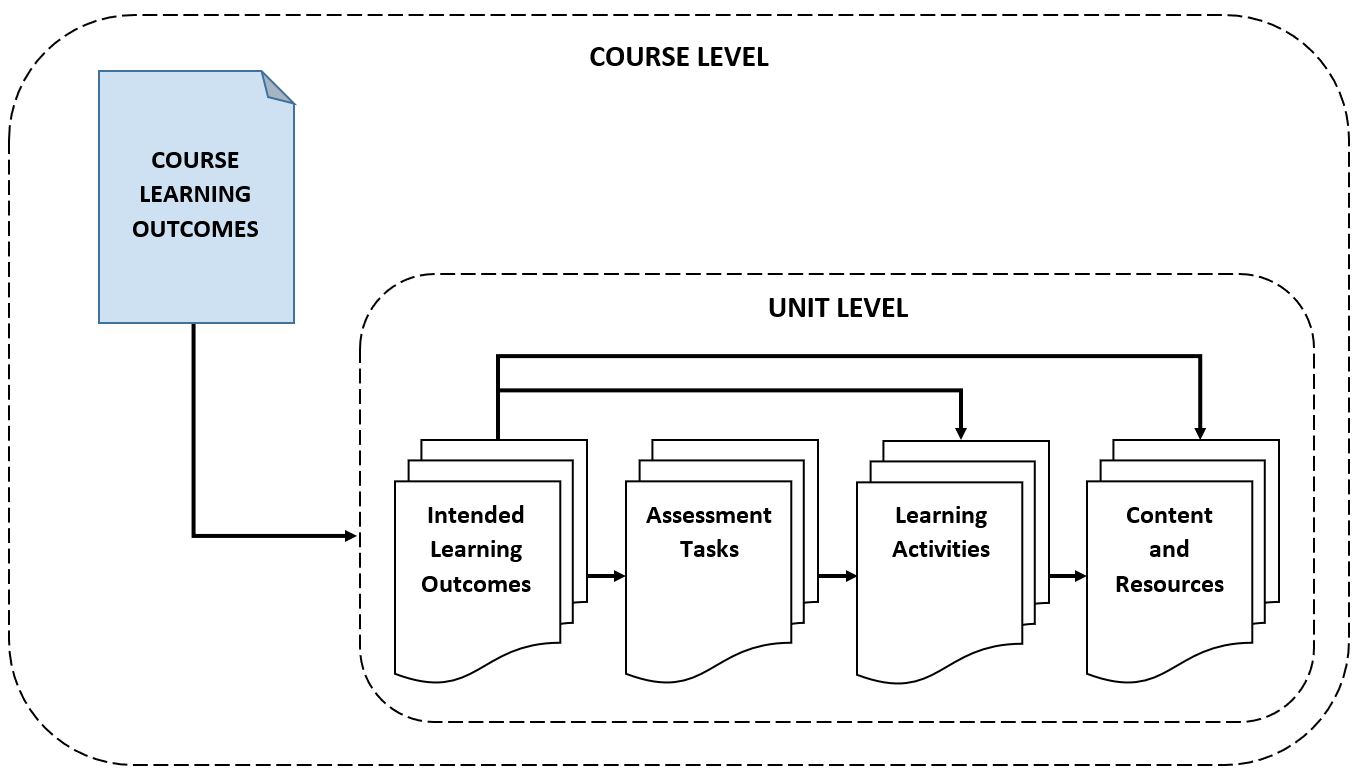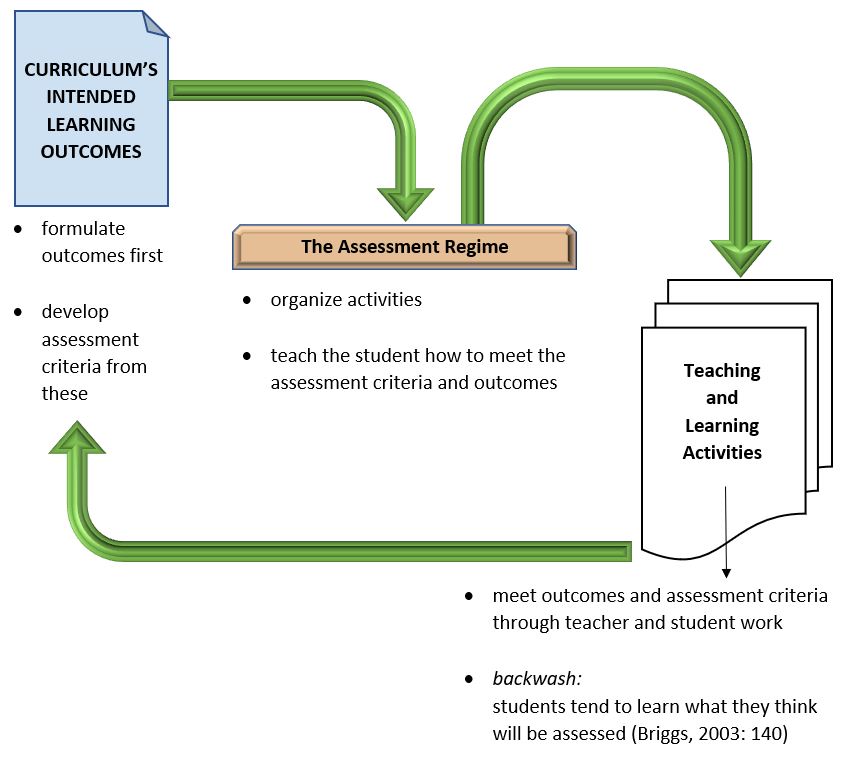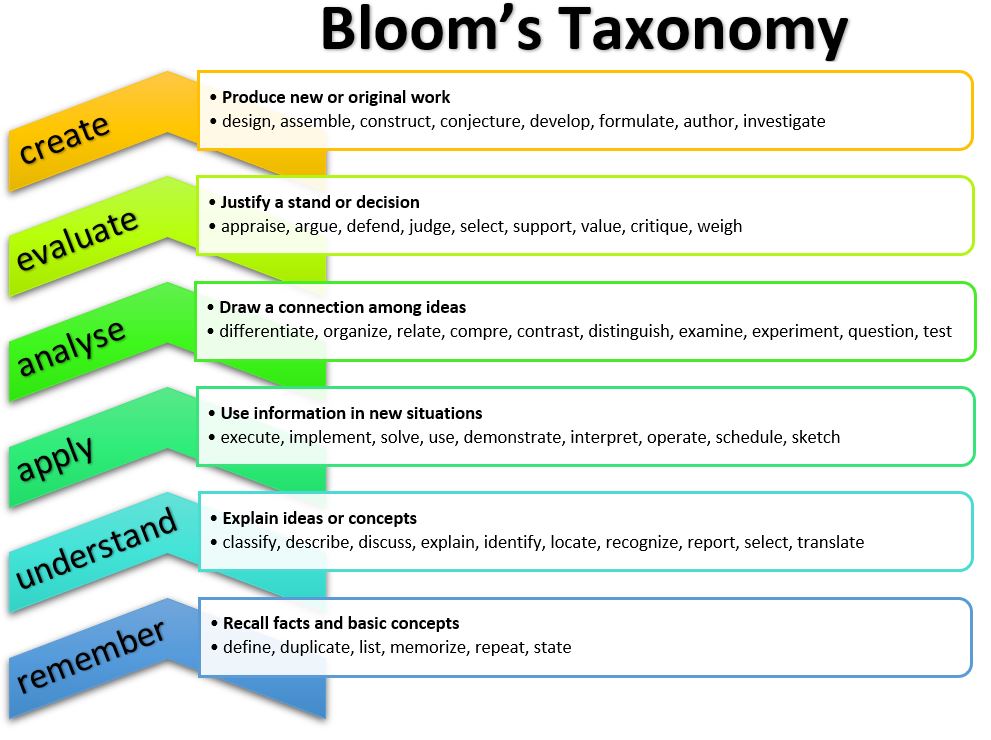10.3 Constructive Alignment of Learning
The many purposes of assessment are to diagnose the methodology of work, formulate opportunities for achievement, and summarize the progress needed for success. Constructive alignment of learning is a method of organizing learning outcomes, teaching practices, and assessments in a systematic way that connects units to the overall content of the course. Below is a flow chart outlining constructive alignment.

Another way to view constructive alignment is through the Biggs method in relation to curriculum design.

Constructive alignment also uses reflection as an important activity for learning. Reflective practice focuses on actionable contemplation and self-awareness that serves as a tool to master learning objectives[7]. The concept of reflective practice is an important aspect of the learning process as previously discussed with prior methodology and through constructing learning based on reflective practice.
Constructive alignment serves the learning objectives of the psychomotor, affective, and cognitive domains by arranging the assessments to the goals of the students in a particular program. This can be done by ordering the learning taxonomies for assessment, and by constructing a combination of Bloom’s and the SOLO taxonomies.

The connection between learning theories on cognition, the construction of curriculum, and teaching practices all work together to benefit the students.
Reflection plays a key role in the constructive alignment of learning. For example, the process of how students achieve goals, and ultimately, how they structure their own learning can be used to meet course objectives. Ambrose et al., describe the role of metacognition and the impact it has on students’ abilities to create and guide their own learning. They mention two students. One is seen as a procrastinator, while the other is viewed as proactive. Although the first may seem to have a stigma attached, both use strategies resulting in learning[6].
What this means is that student learning is not a one-size-fits-all application. Some students (seen as procrastinators) may be able to work more efficiently under pressure, while other students, need to plan and complete work well in advance to be effective. The method by which the learning is done, based on the process, is not relevant, so long as the students are constructing their learning towards mastery.

